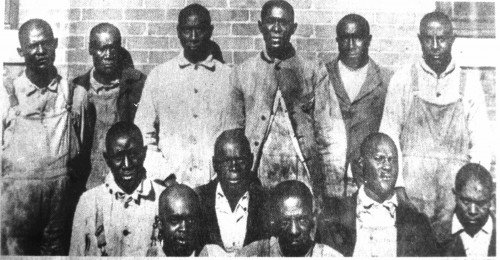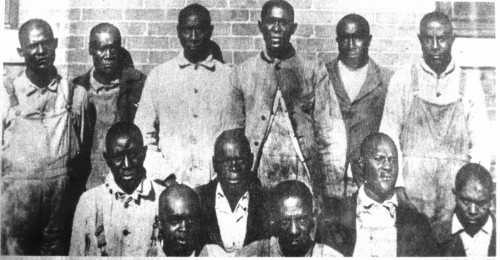

Located in Phillips County, Arkansas, in 1919 Elaine was a small town mostly inhabited by black sharecroppers. Robert L. Hill, a 26 year-old black man from Winchester, Arkansas visited Elaine and realized that the sharecroppers were being consistently exploited and cheated by the landlords. He founded the Organization of the Progressive Farmers’ and Household Union of America as an alliance of black tenant farmers.
With the support of the Union (which had several lodges around Elaine) blacks were able to organize acts of resistance among cotton workers. These included the refusal of Elaine sawmill workers to let the women of their families work for whites, and demands for higher wages for cotton pickers. Union members hired lawyers to sue for money that the landlords owed them for cotton.
Robert Hill began to insist that Union meetings should be secure and guarded in order to keep out all whites. In a meeting on Wednesday, October 1st, 1919, at a church in Hoop Spur, guards armed with rifles and shotguns circled the building in order to protect those meeting inside. A car stopped close to the building and a white man said to the guards “Going coon hunting, boys?” A shootout left one white man dead; three others were killed later.
Unfounded rumors of insurrection had already been coursing through the county seat of Helena (the anxiety heightened by the fact that blacks outnumbered whites in the county nearly three to one), and the area soon found itself overrun with vigilante groups and outside posses roaming the woods and gunning down blacks.
On the third day, October 1, hundreds of armed white men poured into the area. They joined with local whites in a violent rampage through the streets of Elaine. They attacked any and all blacks whom they encountered, regardless of whether they had participated in the initial fighting. The white mobs killed at least fifteen African Americans that afternoon and forced numerous others to take refuge in an area of woodlands and canebrakes.
Meanwhile, responding to the reports that Elaine was “under attack by a force of blacks,” Arkansas governor Charles Hillman Brough secured assistance from army troops stationed at Camp Pike. Five hundred soldiers, armed with twelve machine guns, arrived on the morning of October 2, accompanied by the Governor. The soldiers dispersed the white mobs and set about restoring order.
Although the white mobs had initiated most of the violence, this order-restoring process consisted primarily of the detention of hundreds of African Americans. Many blacks were kept in detention until a local white, often their boss, authorized their release.
